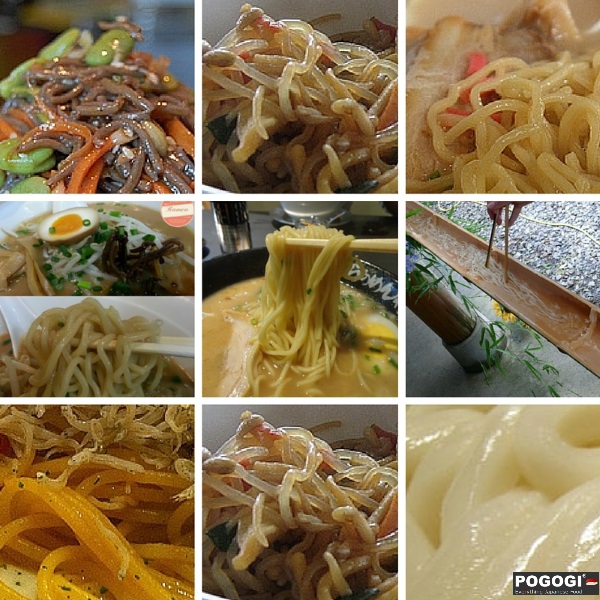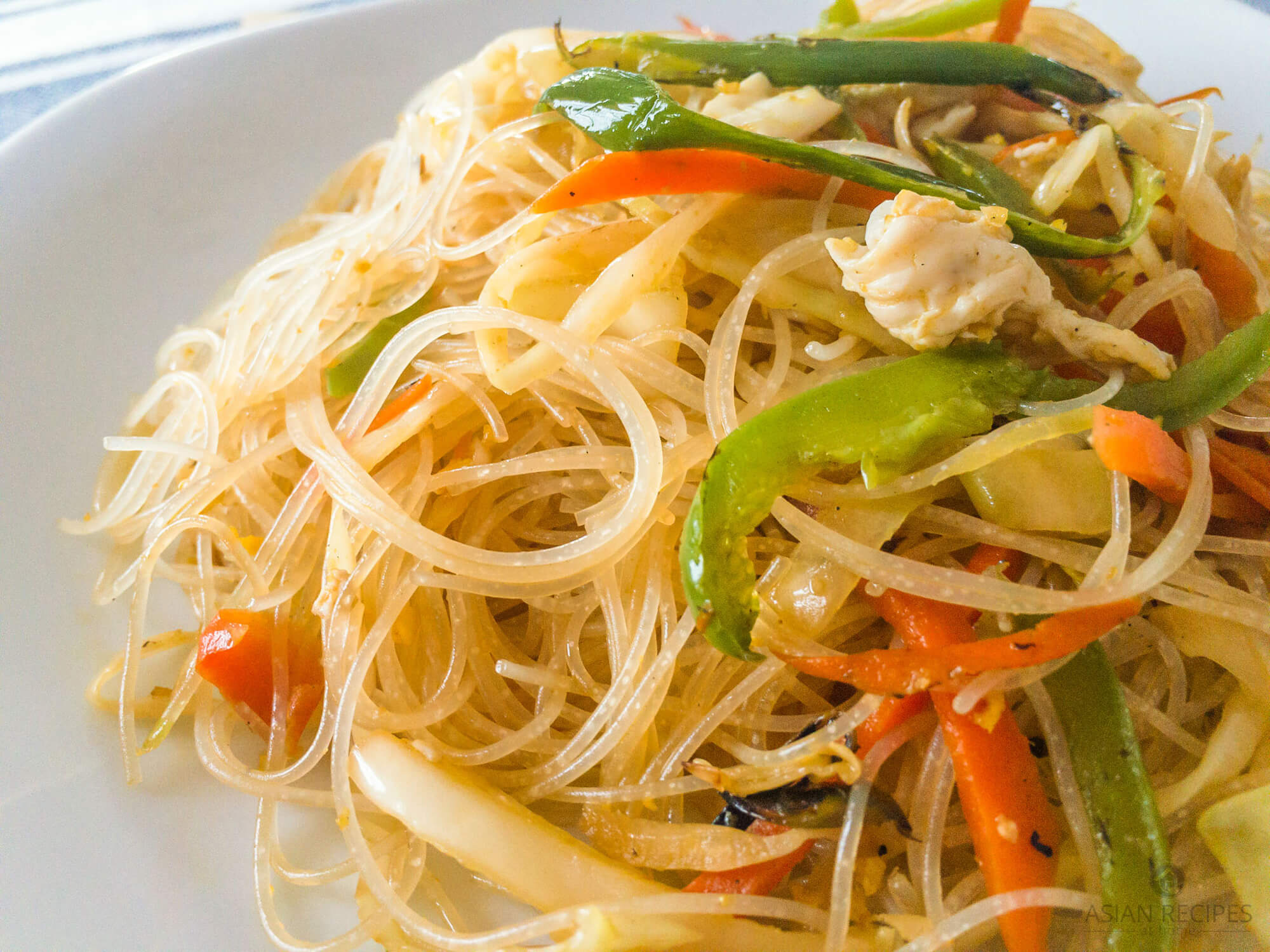Japanese noodles have captivated the hearts and palates of food enthusiasts around the globe. From the comforting warmth of ramen to the refreshing taste of soba, these versatile creations offer a glimpse into Japan's rich culinary heritage. Whether you're a seasoned foodie or just beginning your journey into Asian cuisine, understanding the nuances of Japanese noodles can elevate your dining experience to new heights.
Japanese noodles are more than just a dish; they are an integral part of the country's cultural identity. Each type of noodle tells a story, reflecting regional traditions and historical influences. This article will delve into the world of Japanese noodles, exploring their origins, varieties, and the cultural significance they hold in Japanese society.
As we embark on this culinary adventure, we'll uncover the secrets behind the perfect bowl of noodles, from preparation techniques to pairing suggestions. By the end of this article, you'll have a comprehensive understanding of Japanese noodles, enabling you to appreciate them fully and even try making them at home.
Read also:Justin Bieber Suing Ellen Degeneres The Untold Story
Table of Contents
- The History of Japanese Noodles
- Types of Japanese Noodles
- Ramen: The King of Japanese Noodles
- Soba: A Taste of Tradition
- Udon: Hearty and Satisfying
- Health Benefits of Japanese Noodles
- Cooking Techniques for Japanese Noodles
- Perfect Pairings for Japanese Noodles
- Regional Variations of Japanese Noodles
- The Cultural Significance of Japanese Noodles
The History of Japanese Noodles
The history of Japanese noodles is a fascinating journey that spans centuries. It is believed that noodles were introduced to Japan from China during the Nara period (710-794 AD). Initially, these noodles were considered a luxury item, enjoyed mainly by the elite. Over time, they became more accessible to the general population, evolving into the diverse array of noodles we know today.
One of the earliest forms of Japanese noodles was "kamaboko," a type of fish cake with noodle-like textures. As trade and cultural exchanges increased, new techniques and ingredients were incorporated, leading to the development of soba, udon, and eventually ramen. The influence of Buddhist monks also played a significant role, as they promoted vegetarianism and the use of buckwheat in noodle production.
Today, Japanese noodles are celebrated worldwide, with each region in Japan offering its unique twist on traditional recipes. This rich history has contributed to the global popularity of Japanese cuisine, making noodles a staple in many households.
Types of Japanese Noodles
Japanese cuisine boasts a wide variety of noodles, each with its own distinct characteristics and preparation methods. Below is an overview of the most popular types:
Ramen
Ramen is perhaps the most internationally recognized Japanese noodle. Made from wheat flour, these noodles are typically served in a savory broth, garnished with ingredients like pork, seaweed, and green onions.
Soba
Soba noodles are made from buckwheat flour and are known for their earthy flavor and firm texture. They can be served hot or cold, making them a versatile option for all seasons.
Read also:Is Suge Knight Still Alive Everything You Need To Know
Udon
Udon noodles are thick and chewy, made from wheat flour. Often served in a hot broth or chilled with dipping sauces, udon is a comforting and hearty choice.
Somuchi
Lesser-known but equally delicious, somuchi noodles are a gluten-free option made from yam flour. They have a slightly sticky texture and are often enjoyed in soups or salads.
Ramen: The King of Japanese Noodles
Ramen has become a global phenomenon, with countless variations available worldwide. Originating from China, ramen was adapted by the Japanese to suit local tastes, resulting in a dish that perfectly balances flavors and textures.
There are several regional styles of ramen, each with its own broth and toppings. For example:
- Sapporo Ramen: Known for its rich miso-based broth and generous portions of corn and butter.
- Hakata Ramen: Characterized by a clear tonkotsu broth and thin, straight noodles.
- Tokyo Ramen: Features a soy sauce-based broth and curly noodles.
Whether you prefer a creamy miso ramen or a spicy shoyu variant, this dish offers endless possibilities for customization, ensuring there's something for everyone.
Soba: A Taste of Tradition
Soba noodles have been a part of Japanese culture for centuries, symbolizing longevity and good fortune. Traditionally made from buckwheat flour, soba offers a unique nutty flavor and a satisfying bite.
Health Benefits of Soba
Buckwheat, the primary ingredient in soba, is rich in nutrients such as protein, fiber, and essential amino acids. It is also gluten-free, making it an excellent choice for those with dietary restrictions.
Serving Suggestions
Soba can be enjoyed in various forms:
- Zaru Soba: Cold soba noodles served with a dipping sauce made from soy sauce, mirin, and dashi.
- Kake Soba: Hot soba noodles served in a light broth, often garnished with scallions and nori.
With its versatility and health benefits, soba continues to be a beloved staple in Japanese cuisine.
Udon: Hearty and Satisfying
Udon noodles are known for their thick, chewy texture and ability to absorb flavors from their accompanying broths. Made from wheat flour, these noodles are a comforting choice for any meal.
Popular Udon Dishes
Some of the most popular udon dishes include:
- Kitsune Udon: Udon noodles topped with a piece of deep-fried tofu.
- Curry Udon: Udon noodles served in a rich, spiced curry broth.
Udon's simplicity allows it to pair well with a wide range of ingredients, making it a versatile option for both casual and formal dining.
Health Benefits of Japanese Noodles
Japanese noodles not only offer a delicious dining experience but also provide numerous health benefits. Here are some key advantages:
- Buckwheat in Soba: Rich in antioxidants and essential nutrients, buckwheat supports heart health and blood sugar regulation.
- Whole Grain Udon: Whole grain varieties of udon provide more fiber and nutrients compared to their refined counterparts.
- Low-Calorie Options: Many Japanese noodle dishes are low in calories, making them an ideal choice for those looking to maintain a healthy diet.
By incorporating Japanese noodles into your diet, you can enjoy both the taste and health benefits they offer.
Cooking Techniques for Japanese Noodles
Preparing Japanese noodles requires attention to detail and a proper understanding of cooking techniques. Below are some tips to ensure your noodles turn out perfectly every time:
Boiling Noodles
When boiling noodles, it's essential to follow the package instructions carefully. Overcooking can lead to a mushy texture, while undercooking may result in noodles that are too firm.
Chilling Noodles
For cold noodle dishes, rinse the noodles under cold water after boiling to remove excess starch and prevent them from sticking together.
Seasoning Broths
Creating flavorful broths is key to enhancing the taste of your noodles. Experiment with ingredients like dashi, soy sauce, and mirin to achieve the perfect balance of umami and seasoning.
Perfect Pairings for Japanese Noodles
Japanese noodles are best enjoyed with complementary ingredients that enhance their flavors. Here are some pairing suggestions:
- Ramen: Pair with toppings like marinated eggs, bamboo shoots, and fresh herbs.
- Soba: Serve with wasabi, grated daikon radish, and toasted sesame seeds.
- Udon: Add ingredients like tempura bits, spinach, and kamaboko for extra texture and flavor.
Experimenting with these pairings can elevate your noodle dishes to new levels of deliciousness.
Regional Variations of Japanese Noodles
Each region in Japan has its own unique take on noodles, influenced by local ingredients and traditions. Some notable regional variations include:
Hokkaido
Hokkaido is famous for its rich, creamy miso ramen, often topped with corn and butter. The cold climate of this northern region makes hearty noodle dishes particularly popular.
Kyoto
Kyoto is known for its delicate soba noodles, often served with a light dipping sauce. The city's emphasis on traditional craftsmanship is reflected in the quality of its noodles.
Okinawa
Okinawan soba is a unique twist on traditional soba, featuring thicker noodles and a pork-based broth. This variation highlights the island's distinct culinary identity.
The Cultural Significance of Japanese Noodles
Japanese noodles are more than just food; they play an important role in Japanese culture and traditions. For example, eating soba on New Year's Eve is believed to bring good luck and longevity. This practice, known as "toshikoshi soba," symbolizes letting go of the past year and welcoming the new one with hope and prosperity.
In addition to special occasions, noodles are also a common feature in everyday life, offering a quick and satisfying meal for busy individuals. Their versatility and adaptability have made them a beloved part of Japanese cuisine, enjoyed by people of all ages and backgrounds.
Conclusion
In conclusion, Japanese noodles offer a fascinating glimpse into the country's culinary heritage and cultural traditions. From the history of their development to the variety of types available, there is much to explore and appreciate in this delicious category of food. By understanding the nuances of Japanese noodles, you can enhance your dining experience and even try your hand at making them at home.
We invite you to share your thoughts and experiences with Japanese noodles in the comments below. Whether you have a favorite dish or a unique pairing suggestion, your input is valuable to our community. Don't forget to explore other articles on our site for more insights into the world of food and culture.


